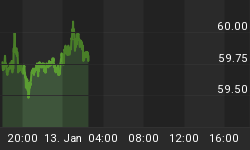Rotational combines component rotation and asset class rotation to hold a small basket of ETFs or ETNs, selecting the handful with the most momentum from a representative sampling of classes and components. Throughout this article, when I refer to momentum, I am referring to an exponentially smoothed measure based solely on price movement.
Information is as of the close on June 27, 2008.
Model Allocation
Based on beginning with a $100,000 portfolio at inception, these are the current weights and holdings. The initial target was a buy of 10% weights per position. See my previous post on this system. Sort is alpha order by ticker and weights are rounded to the tenth of a percent.
Brazil (EWZ) 9.7% weight
Oil Equip/Srvcs (IEZ) 9.5% weight
Natural Resources (IGE) 8.8% weight
Oil Services (OIH) 9.2% weight
Energy Exploration (PXE) 9.1% weight
Russia (RSX) 8.1% weight
Steel (SLX) 9.7% weight
Natural Gas (UNG) 12.0% weight
Oil (USO) 14.1% weight
Materials (XME) 10.0% weight
Cash -0.1% weight.
Returns
Based on beginning with a $100,000 portfolio at inception.
Equity: $108,488.53
Gain, Past 4 Weeks: 2.49%
Gain, Year to Date: 6.76%
Gain, Since Inception on 11/19/2007: 8.49%
None of the ETFs in the Rotational portfolio paid dividends or distributions in the past four weeks.
Total dividends = $0.00 on the tracking portfolio. This amount is included in the returns shown above, and will remain in cash until needed for a new purchase. Note, commissions are expensed at $10.00 per trade when accounting for returns.
Changes To Model Allocation
Rotational screens for momentum inside a list of ETFs and ETNs by asset class category. The system is holding the top 10 issues, ranked by momentum, regardless of which asset class they are in or how much momentum they have.
If this system were to be initiated today, the target allocation would be a buy for 10% weight holdings of the ten issues highlighted in gold or green in the table below. Items highlighted in gray are "sells" from the existing model portfolio.
If the table is truncated in your browser, click on it to view it in its own pane. Depending on your browser, you may have to click again to view it in full size.

Tracking
Shares of RSX will be sold, market at open on Monday. The proceeds, plus cash, comprise 8.0% of portfolio weight, and will be used to buy shares of MOO based on the closing prices on June 27. I will round down any fractions in the share calculation.
Commentary
Below, I present the change in rotational momentum from the last evaluation to the current one. It can be quite instructive.

Here is a table that shows the average momentum for the different issues in each asset class, at different evaluation dates from the inception of the program.

Bonds, as an asset class on average, no longer have some positive momentum. The largest negative change is in international Treasuries, followed by corporate quality bonds and longer-duration (20+ years) and intermediate (7-10 years) U.S. Treasuries. Some bonds, like emerging market debt, still have positive momentum, but all classes have lost momentum over the last four weeks. The short term (1-3 years) U.S. Treasuries have basically zero momentum, and have lost momentum as well. The same dichotomy between rising long-term yields, often a sign of "inflation fears," and the loss of momentum in precious metals, still exists.
Commodities as a class still have the most momentum, but are still losing momentum rapidly. Natural Gas, Agriculturals, and Oil are still gaining momentum, although Oil is barely gaining ground. All of the metals are continuing to lose momentum hand over fist. I would suggest that the gains are from structural or fundamental concerns about those assets, with little overt "inflation fear" - since the metals are falling in momentum, even if some of them still have positive momentum overall.
Currencies competing against the dollar dropped in momentum, although all but two still show momentum against the dollar. Interestingly, the "carry trade" tracker DBV has gained in momentum over the past four weeks, and is now in positive territory. It appears the carry trade has stabilized, as the DBV appears to be basing around $27. The biggest momentum loser is the Yen, although the Euro is the third-biggest momentum loser, perhaps suggestive of a worsening outlook for Europe relative to the U.S.
The foreign stock markets fell of the turnip truck this month, and are the biggest losers as a group. NO foreign market gained momentum over the last four weeks. Brazil and Russia are the strongest foreign markets.
The domestic industry groups faired better, even though they still lost momentum as a group. In terms of high momentum, it's all about resources, with the strongest classes still gaining strength. However, the biggest momentum-gainers are in technology, not resources. Networking and electronics led the class. Banks and homebuilders were the biggest losers. Software, Semiconductors, and Networking are all in positive territory, and cyclical building stocks and retailers are in positive territory, as well. Staples, gold miners, and health care stocks are in the negative momentum. This is not a recession bet - this is an anti-Financials bet, as they are the dregs of the momentum class right now.
REITs took a step backwards, losing almost as much momentum as the foreign markets did, and having the worst momentum of any class. Residential and industrial/office REITs continue to hang around very close to positive territory, however.
While this has certainly been a tough market to call, it hasn't seem to have bothered Rotational one tiny bit, as the program gained in equity over the last four weeks and is firmly in positive territory for the year to date.
If you'd like to become of member of The Rempel Report, you can register here. Members receive email notification of new posts and can contribute to the site through comments. Registration is still free!
















